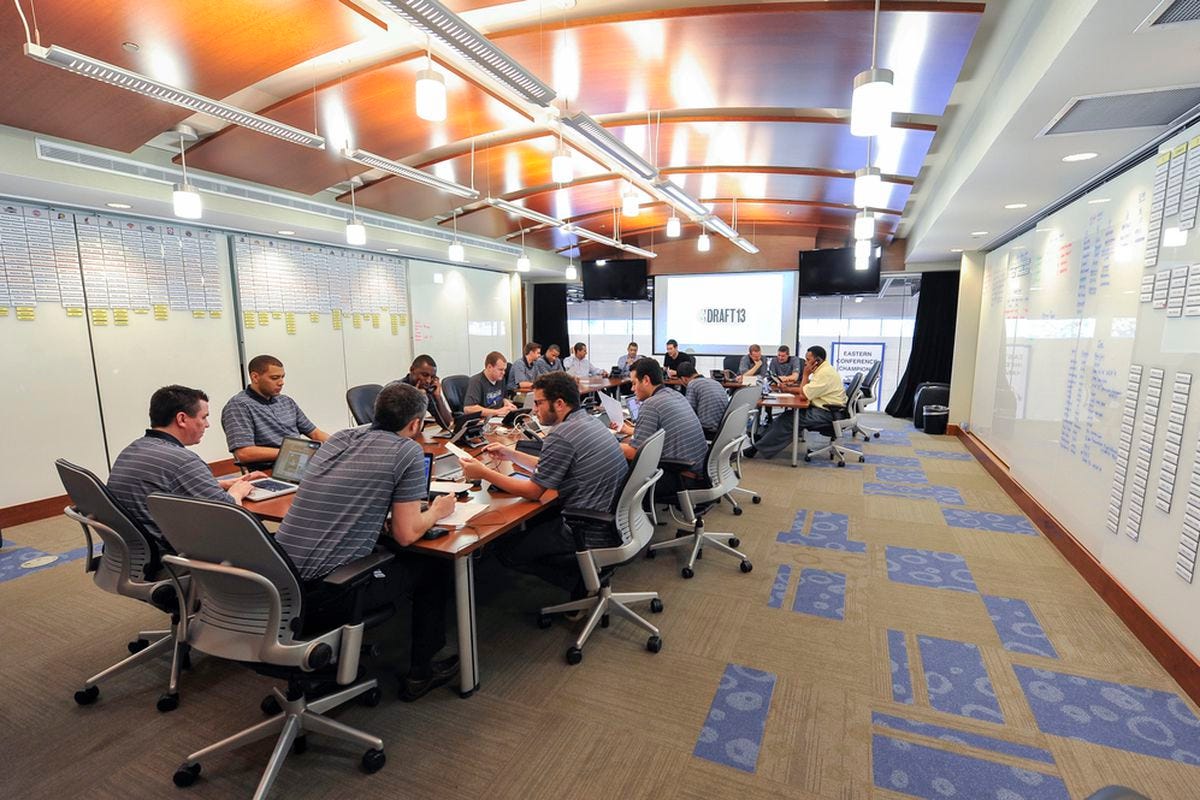Is the 2024 NBA Draft Class Really That Poor?
An early look into the [lack of] top names and what that could mean for draft day trades this June
Usually, I wait until after draft night to start a public-facing preview of next year’s draft class. There’s only so much draft content that we can compartmentalize, and adding videos and breakdowns of these players too early can lead to wrong conclusions or takeaways.
Given where the conversation is around the 2024 draft class at this point in time, I think it’s worth contextualizing the top-tier talent or depth in this class. The timing is appropriate as we get into the moments leading up to the 2023 NBA Draft because, well, I often hear the phrase “trade back or trade out” brought up online when amateur trade artists are conjuring up moves for their favorite teams.
Trading back is possible with consolidation deals or those involving veterans already on NBA rosters. But trading out of this draft — and ostensibly into the 2024 draft — seems like it could be a losing proposition when stacking up the proven depth of this class and the pretty high-end challenges in previewing 2024.
Where I’m at right now is here: there is no prospect in 2024 who has established himself as belonging in Tier 1 of prospects up to this point in time, and very few (if any) who would be in my Tier 2. The draft class gets a bad rap for not having top-end talent, although there are candidates who are more or less likely to emerge and fill that void.
I’m a firm believer that some of the players in that video will rise up to help the class round into shape over the next twelve months. The issue we’re finding is that nobody seems to have established themselves as a standard top-three talent up to this point, and that could have real implications for draft night strategy this year.
It will be more difficult for teams to trade out of this draft class and into next year’s due to the doubt they’ll find a similarly-valued player in the same draft range.
More than anything, this impacts teams who are looking more realistically at having a lottery pick next year. The flattening of the lottery odds and the unpredictability of standings next year make it impossible to say with certainty that trading the 15th pick in this draft for one that could end up in the 8-14 range next year is actually a losing proposition.
With all that said, I do believe there’s a fair amount of depth in the 2024 class. A large part of that has to do with the upside potential of many sophomores returning to school next year. I’m sure I’ll do a “sophomore breakout candidate” video series again over the coming summer to break down the film and upsides of many of them, but there seems to be a higher number of players returning to college with lottery potential in a somewhat normal draft class.
Duke’s Tyrese Proctor and Connecticut’s Donovan Clingan highlight that list. Proctor is a big, heady point guard who made real strides as a scorer at the end of the season. If those continue, look out lottery. Clingan played off the bench for the National Champions; his size, touch, and defensive aptitude are all incredibly fascinating for NBA teams.
There are plenty of others who could join that list and leap into the lottery. Florida’s Riley Kugel, Florida State’s Baba Miller, Indiana’s Kel’El Ware, Arizona’s Kylan Boswell, and Tennessee’s Julian Phillips all have incredible upside to pop next year and in a pro scheme. While he’s not a collegiate returner, Ulm’s Juan Nunez is an interesting player from across the pond who flirted with the draft this year.
Speaking of Nunez, the international flavor to the lottery could be quite rich next year. There are several prospects who have lottery upside from overseas, and that doesn’t get discussed enough as a factor that could help stabilize the talent level in 2024. Alexandre Sarr and Izan Almansa played last year with the Overtime Elite program and have found real success in international competition. Thierry Darlan will head to the G-League Ignite next year. These guys are currently a bit off the radar but have incredible upside.
No matter how the 2024 class shakes out in due time, the early returns at the top make it nearly impossible to willingly trade into next year’s draft right now. Scouts and general managers have to operate with the information they have. More than a year or two out, it’s easier to make those trades to simply acquire assets or punt decisions down the road. On draft night, to trade apples now for apples later, requires more nuance and evaluation to get done. Equal value and security for the team trading out of this year’s draft will be tough to come by.




